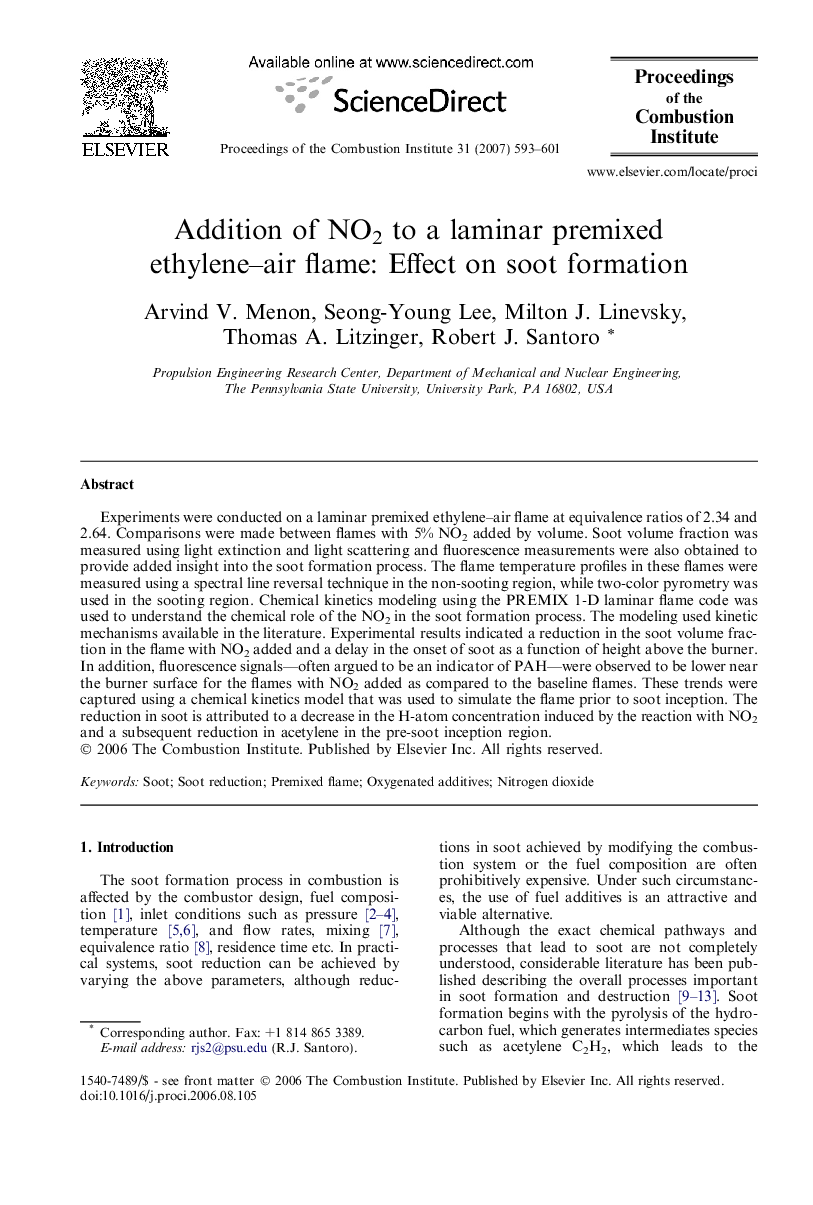| Article ID | Journal | Published Year | Pages | File Type |
|---|---|---|---|---|
| 240765 | Proceedings of the Combustion Institute | 2007 | 9 Pages |
Experiments were conducted on a laminar premixed ethylene–air flame at equivalence ratios of 2.34 and 2.64. Comparisons were made between flames with 5% NO2 added by volume. Soot volume fraction was measured using light extinction and light scattering and fluorescence measurements were also obtained to provide added insight into the soot formation process. The flame temperature profiles in these flames were measured using a spectral line reversal technique in the non-sooting region, while two-color pyrometry was used in the sooting region. Chemical kinetics modeling using the PREMIX 1-D laminar flame code was used to understand the chemical role of the NO2 in the soot formation process. The modeling used kinetic mechanisms available in the literature. Experimental results indicated a reduction in the soot volume fraction in the flame with NO2 added and a delay in the onset of soot as a function of height above the burner. In addition, fluorescence signals—often argued to be an indicator of PAH—were observed to be lower near the burner surface for the flames with NO2 added as compared to the baseline flames. These trends were captured using a chemical kinetics model that was used to simulate the flame prior to soot inception. The reduction in soot is attributed to a decrease in the H-atom concentration induced by the reaction with NO2 and a subsequent reduction in acetylene in the pre-soot inception region.
